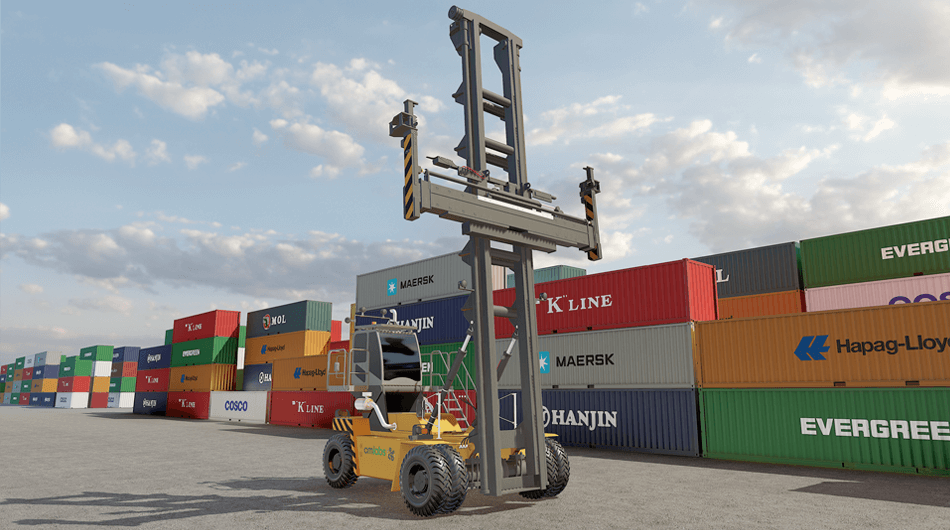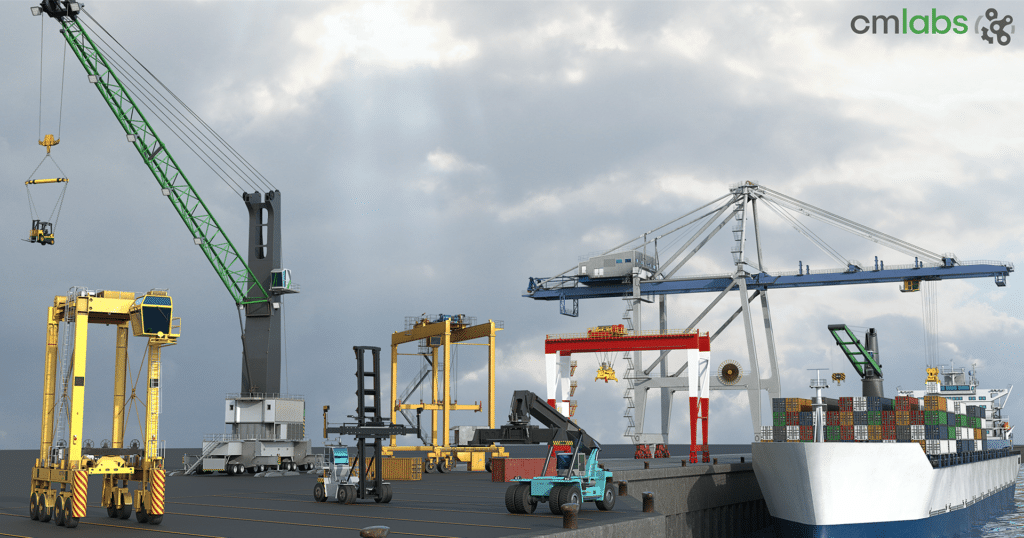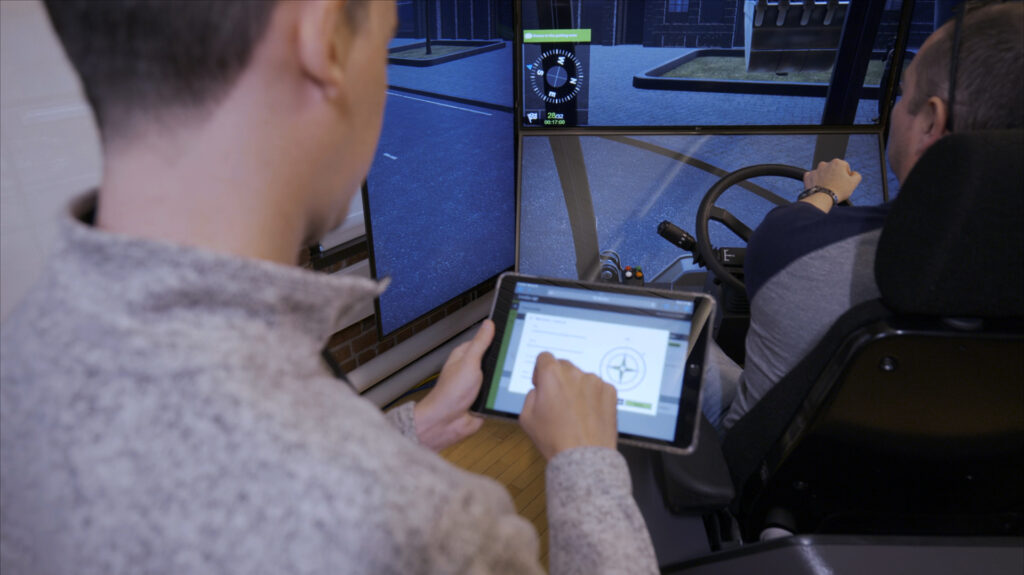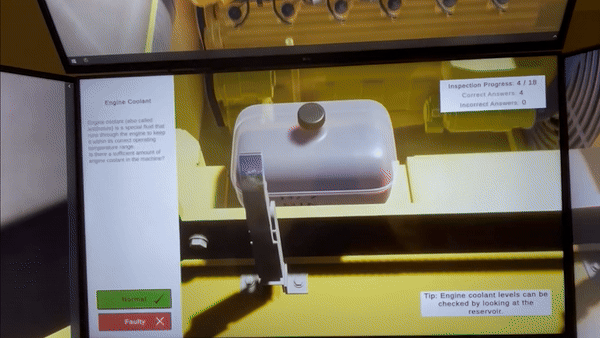With attendees from over 50 countries, CM Labs’ virtual tradeshow focused on latest and future training technology
CM Labs’ recent Virtual Ports Tradeshow, held in October, was an important reflection of the port sector’s ongoing trend toward digital transformation. That’s why the focus of the show was on the latest (and future) training technology, and its implications for terminal efficiency, safety, and overall productivity.
One of the key takeaways from the event revolved around the huge interest expressed in remote operations technology, as well as the associated training technology.
This presentation and demo prompted a number of questions from the audience, and we’ll address some of them in this post:
Q: What are the most challenging issues facing terminals adopting remote operation and automation projects?
A: One of the most significant challenges facing port terminals adopting automation is the need to overcome the complexity and recognize the benefits as rapidly as possible. The critical ingredient in this transformation is operator training. Experienced operators must develop the habit of operating without the benefit of the key sensory inputs they typically rely on, particularly the sense of feel. This takes time and practice. By training on simulator-based remote systems prior to commissioning the actual equipment, you ensure operators are up to speed early in the process, if not by day one. The additional benefit of this type of simulation-based training is that it enables rapid hands-on assessment of new operators.
Q: Can you use the same equipment for both remote operations and remote operations training?
A: Yes, absolutely, and in fact this enables a seamless transition from training to operations. CM Labs’ Remote Operating Desk simulator is the only commercial solution on the market that can integrate with the controls systems from original equipment manufacturers (OEMs) such as ZPMC. The ROS training solution is delivered as a fully functional operating desk with joysticks, buttons, a full-screen layout, and OEM controls. It simulates all crane functions, camera displays, and automated safety functions, as well as the terminal’s container management system. It also includes a control system (with ship profiling system and other operator assist functions such as smart slowdown or anti-collision systems), industrial-grade computers to run the simulation software, and all the camera views available to the operator at actual ROS stations.
Q: In terms of simulation, do you see a drastic difference on the ROI based on terminal size (TEU)?
A: The ROI of simulation-based solutions is generated from a few different dimensions:
- Savings & efficiencies in operator assessment
If you are using equipment that is devoted to operations, assessing a relatively small pool of operator applicants can take weeks, if not months. This is because when production equipment is not operating, maintenance and repairs take priority over training & operator assessment. With simulation-based solutions, you benefit from a tool that is always available and always ready which speeds the assessment cycle considerably — and reduces the costs. Furthermore, experience in the field shows that there is a strong correlation between success on the assessment simulator and success on the actual cranes. Whereas 10-12% of all entry candidates become acceptable crane operators using the traditional manual approach, 25-30% become acceptable crane operators using the simulator method, simply due to the ability to screen and select candidates more effectively. This approach is 2.5 to 3 times more effective. - Savings in training costs Cost savings in training stem from several sources. If simulation is used at the candidate assessment stage, training success rates improve substantially, as indicated above. It also makes it easier to implement concentrated seat time with targeted training objectives, which represents a far more effective use of your training resources. Our clients estimate that the learning curve is 6-12 months faster, which has a large positive financial impact, easily representing hundreds of thousands of dollars. Above all, simulation-based training removes the requirement for a crane on the quay or yard for training, resulting in a substantial reduction in running costs as well as standard maintenance and repair costs associated with inexpert handling of the equipment.
- Productivity boosts Naturally, the use of simulators tends to impact short-term productivity, rather than long-term productivity, as new and less experienced operators will reach an acceptable and eventually a very good level of productivity much faster than without simulators. The reported benefits of simulator training are clear: our clients indicate that effective STS simulator training programs can reach productivity levels of 32-35 moves per hour at the end of training, compared to an average 25-28 moves per hour across other terminals. This is a productivity improvement of roughly 23%.
The larger the terminal, the more all these factors and savings scale up.
Q. If most ports appear to experience a productivity drop when they move to automation, what are the merits of an automated system as compared to the traditional operation?
A. For many ports, it is quite true that automation productivity cannot match the productivity of their top operators. Whereas STS operators may have productivity peaks of 35-40 moves per hour, automated systems tend to maintain a steady productivity of 25-28 moves per hour. However, the peripheral savings add up quickly when you consider the ability to conduct operations steadily with no shift changes, breaks, or additional salary expenses associated with overtime, etc. Once again, however, the key to recognizing these benefits is the ability to train the workforce for the new operational challenges they will be facing.
To access full presentations and demos from the tradeshow event, click on any of the sessions below:
Roadmap for successful adoption of remote port operations technology
Jiahua Wen, Project Manager and Division Manager for ZPMC Smart Solutions Group (Shanghai), presents the landscape of innovative new remote operations technology, and key considerations for ensuring successful technology adoption.
Applying new biomechanical research to improve crane operator health and safety
Brieda Cabins CEO Siro Brieda presents the latest research and innovative technology for improving port crane operator health and safety.
How to improve operator training with simulation
Marc Desmons, Owner of MarCrane Port Equipment Consultant, and former Director Equipment Engineering for Terminal Investment Limited (TiL), presents insights based on three decades of experience working with simulators. Learn about use cases for simulation, before-and-after outcomes, and how to position simulation installations to ensure maximum benefit.
See all sessions
Looking for a one-on-one demo? Connect with us now.





